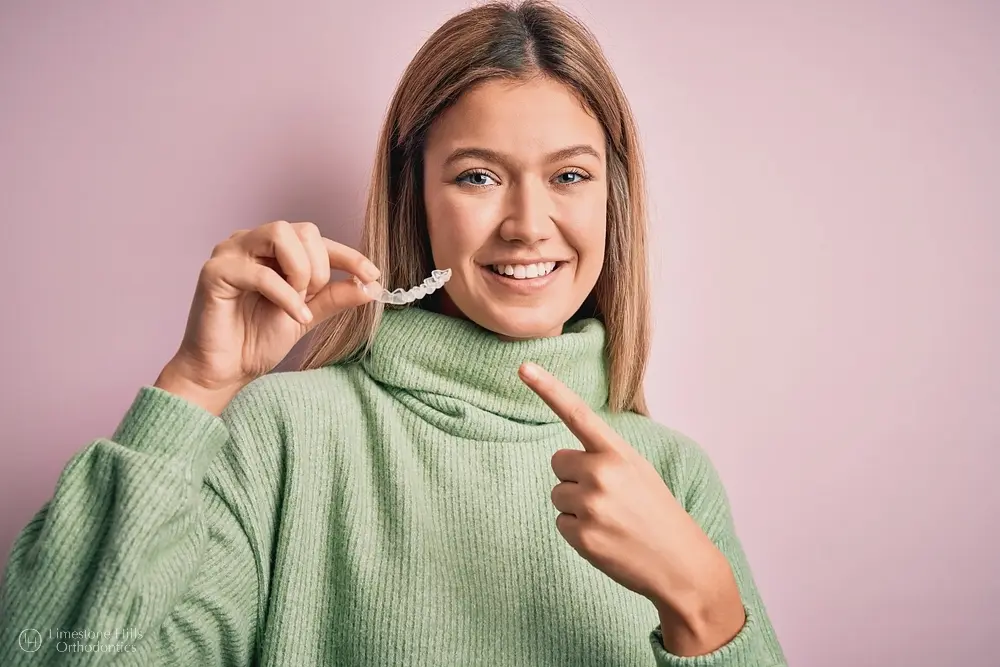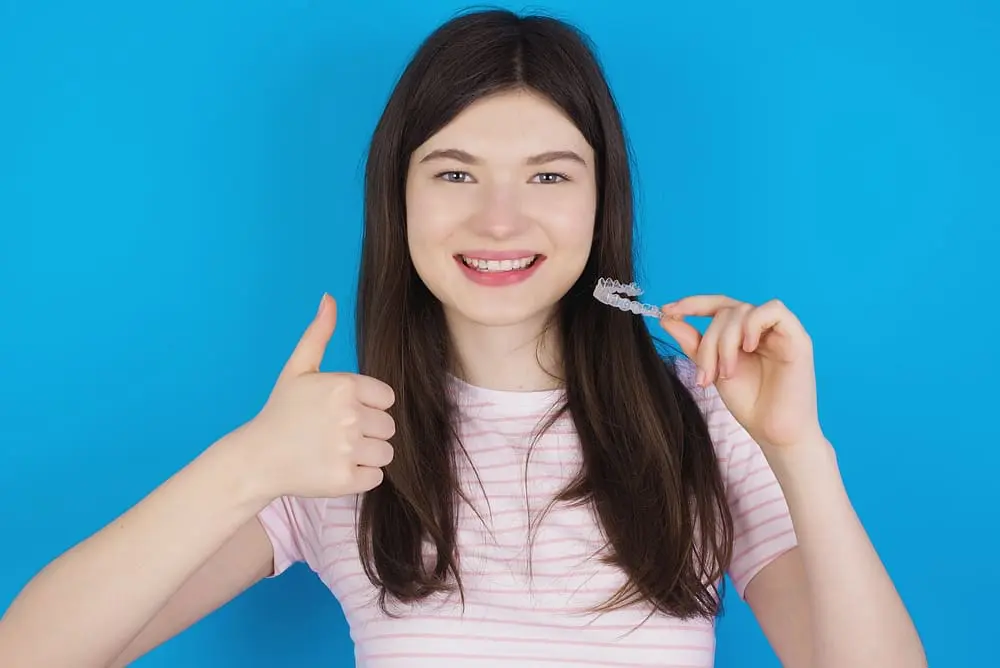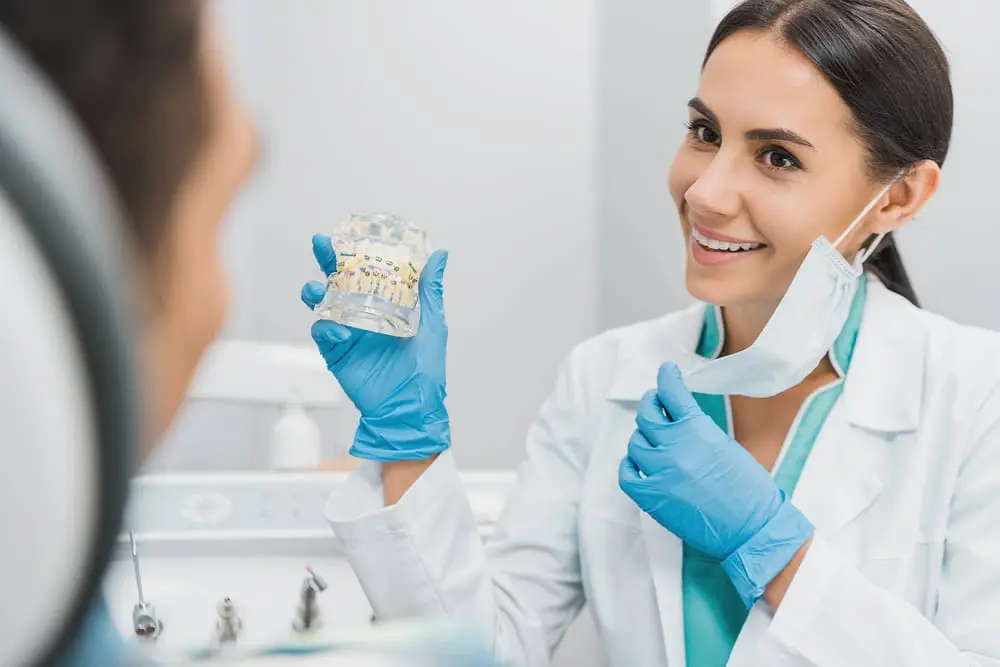Invisalign is a popular way to straighten teeth without using braces. It’s a clear and discreet option that many people in Austin, TX, choose for their orthodontic care. To make Invisalign even more effective, small tools called Invisalign attachments are often used. These attachments are tiny, tooth-colored bumps bonded to the teeth. They help the aligner grip the teeth better, making tooth movement faster and more precise. This guide explains everything you should know about Invisalign attachments and their importance in achieving a great smile.

What Are Invisalign Attachments?
Invisalign attachments are small, bump-like additions placed on certain teeth during your treatment. Made from a resin material, these attachments are almost the same color as your teeth, so they blend in well and are not very noticeable.
Attachments enhance the effectiveness of Invisalign aligners by giving them a better grip on your teeth. This extra grip allows the aligners to apply pressure more precisely, helping with tough movements like rotating or tilting teeth.
Do All Patients Need Attachments?
No, not everyone requires attachments. They are mainly used for people who need more complex tooth adjustments. Cases with minor tooth movements may not need attachments, but if your teeth require extra force to move, attachments will likely be part of your treatment plan.
Why Are Invisalign Attachments Important?
Invisalign attachments play a critical role in many orthodontic cases. Their primary job is to help the aligners work better by ensuring the right amount of pressure is applied to specific teeth. Here’s why they’re important:
- Anchor Points: Attachments act as small handles, giving the aligners a place to grip the teeth tightly.
- Precise Pressure: With attachments, aligners can apply targeted pressure to move teeth in specific directions.
- Improved Results: Attachments allow Invisalign to handle complex cases like crowded teeth, gaps, bite problems, or tilted teeth.
What Types of Tooth Movements Need Attachments?
Attachments are required for specific types of movements, such as:
- Rotating Teeth: If a tooth is twisted, attachments help the aligner turn it to the correct position.
- Vertical Movements: Teeth that need to be moved up or down to align properly.
- Closing Gaps: Attachments help aligners push teeth closer together to close spaces.
- Crowding Issues: If teeth are overlapping, attachments provide the extra force needed to align them.
Without attachments, aligners may not have the strength to achieve these movements effectively.
Invisalign Attachments vs. Braces Brackets
While attachments and braces brackets both help move teeth, they are very different:
- Size and Appearance: Attachments are much smaller and tooth-colored, making them less noticeable. Braces brackets are larger and often made of metal.
- Removability: Invisalign aligners, along with their attachments, are removable, while braces are fixed and cannot be taken off during treatment.
- Comfort: Attachments are smooth and subtle, while braces may cause discomfort due to their wires and brackets.
This makes Invisalign with attachments a great choice for people looking to fix their teeth discreetly.
How Are Invisalign Attachments Applied?
The Placement Process
Getting attachments is a simple and painless procedure that takes about 20–30 minutes. Here’s how it works:
- Cleaning: The orthodontist cleans and dries the surface of your teeth where the attachments will go.
- Template Creation: A custom template, made from aligner material, is placed over your teeth. This template ensures the attachments are positioned correctly.
- Bonding: A small amount of composite resin is placed in the template on the designated teeth. A special light is used to harden the resin and secure the attachments to your teeth.
- Final Touches: The template is removed, and the orthodontist polishes around the attachments to ensure your comfort.
Once the attachments are in place, the aligners will fit snugly over them, providing the grip needed to move the teeth efficiently.
How to Care for Invisalign Attachments
Keeping Them Clean
Proper cleaning is essential when you have attachments to avoid buildup of food or plaque around them. Here are tips to maintain good oral hygiene during treatment:
- Brush your teeth after every meal, focusing on the areas around the attachments.
- Use floss or an interdental brush to clean between your teeth and around the attachments.
- Consider using a water flosser for a deeper clean.
By keeping your attachments clean, you can prevent staining and maintain a healthy, bright smile.
Adjusting to Attachments
At first, you might feel the attachments when you run your tongue over your teeth, but most patients get used to them quickly. If brushing feels tricky around the attachments, take your time and use tools like angled flossers or interdental brushes to ensure thorough cleaning.
Do Attachments Stay On Forever?
Attachments are temporary and will only stay on your teeth for the duration of your Invisalign treatment. Once your treatment is complete, the orthodontist will carefully remove the attachments. The teeth are then polished to remove any leftover adhesive, leaving your teeth smooth and clean.
Who Can Benefit Most from Invisalign Attachments?
Invisalign attachments are helpful for people with:
- Crowded Teeth: Attachments provide the force needed to align tightly overlapped teeth.
- Teeth Gaps: If there are spaces between your teeth, attachments help close the gaps more effectively.
- Bite Problems: Attachments are often used to fix issues like overbites and underbites.
- Rotated Teeth: Teeth that need to be turned can be adjusted faster with attachments.
An orthodontist will decide if you need attachments based on your specific needs during your consultation.
Benefits of Invisalign Attachments
Here are some key advantages of Invisalign attachments:
- Better Results: Attachments make it possible to treat more complex cases, ensuring your teeth move into the correct position.
- Discreet Appearance: They are small and tooth-colored, so they’re hard to see.
- Comfortable and Removable: Unlike braces, Invisalign aligners and attachments are easy to remove when eating or brushing.
With these benefits, Invisalign attachments make orthodontic treatment more effective without sacrificing comfort or appearance.

Why Choose Our Orthodontic Practice in Austin, TX?
At our Austin orthodontic office, we’re dedicated to providing high-quality, personalized care to every patient. Here’s why families trust us for their orthodontic needs:
Experienced Orthodontic Experts
Our skilled orthodontists have years of experience treating children and teens with jaw alignment issues. We specialize in effective treatments like reverse pull headgear, delivering exceptional results tailored to each patient.
Customized Treatment Plans
No two smiles are the same, which is why we design personalized treatment plans to meet your child’s unique needs and goals, ensuring the best possible outcome.
Comprehensive Support Throughout Treatment
From your very first consultation to the final reveal of your new smile, our caring team is here to support you. We’re always available to answer questions, make adjustments, and offer guidance every step of the way.
A Wide Range of Treatment Options
We offer more than just reverse pull headgear. Our practice provides a variety of orthodontic solutions, including Invisalign and traditional braces, so we can find the perfect fit for every patient.
Schedule Your Free Consultation Today!
Come see us in Austin, TX, for a free consultation! During your visit, we’ll assess your teeth, go over your treatment options, and discuss how we can help you achieve a straight, confident smile. Scheduling is simple—give us a call or visit our website to book a time that works for you! Our friendly team is ready to answer your questions and guide you every step of the way.
About the Authors
Dr. Rodrigo Viecilli – Orthodontist in Austin, TX
Frequently Asked Questions about Invisalign Attachment
Are Invisalign attachments necessary?
Invisalign attachments can be quite helpful, but whether they’re necessary really depends on your specific dental needs. These tiny, tooth-colored shapes are bonded to your teeth to help the aligners make the precise movements needed to straighten your smile. Think of them as little helpers that give your aligners a better grip! While not everyone will need them, they can be essential for more complex tooth movements.
Your orthodontist will be the best person to guide you on whether attachments are a must for your treatment plan. So, it’s always a good idea to have a chat with them to see what’s best for your journey to a straighter smile!
How long do Invisalign attachments stay on?
Invisalign attachments typically stay on your teeth for the duration of your Invisalign treatment, which can range from several months to a couple of years, depending on your specific orthodontic needs. These tiny, tooth-colored bumps are designed to help the aligners fit snugly and move your teeth more effectively. Your orthodontist will monitor them during your regular check-ups and ensure they’re doing their job. Once your treatment is complete, they’ll be gently removed, leaving you with a beautiful, straight smile!
Can you say no to Invisalign attachments?
Absolutely, you can say no to Invisalign attachments! It’s important to remember that your orthodontic journey is a personal one, and you have every right to discuss your preferences and concerns with your orthodontist. While attachments can enhance the effectiveness of your treatment by providing additional grip for the aligners, if you’re not comfortable with them, it’s perfectly okay to explore alternative options or adjustments to your treatment plan.


